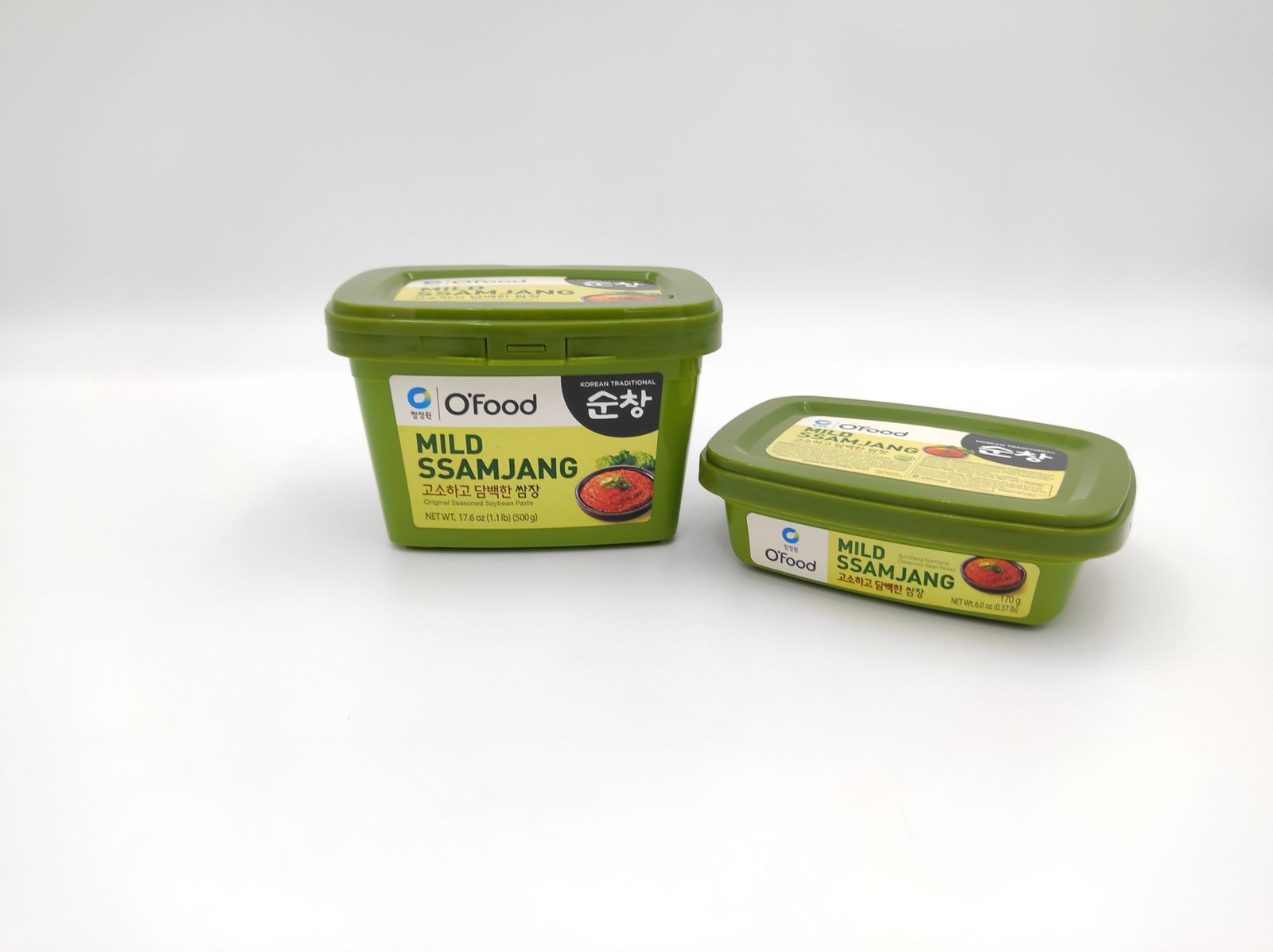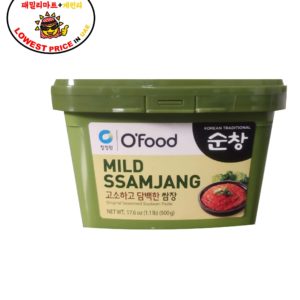Korean ssamjang sauce
Hello, in this blog I'm talking about Korean food and the great Korean sauce called ssamjang stay with me to know what is that ssamjang-쌈장.

A Korean condiment for lettuce wraps is called ssamjang. Learn how to prepare the traditional ssam sauce, as well as a tuna, can version.
Ssamjang (Sauce for Korean Lettuce Wraps)
Ssamjang is best known as a dipping sauce for lettuce wraps served with Korean barbecue. Ssam is the Korean word for wraps or wrapped food, and jang is the general term for fermented Korean condiments like doenjang, gochujang, and ganjang.
Technically speaking, ssamjang refers to any sauce used for ssam. While there are many different varieties, doenjang and/or gochujang are frequently used in addition to a few additional components. The mixture is usually used as a dipping sauce for fresh vegetables like cucumbers, carrots, and chiles at the table or as a sauce for vegetable wraps. on the Family Mart Korean food grocery store in the UAE you can find the ssamjang offline and online in the Barsha you can find the grocery store there. Refer to here: familyk.ae.
Ssamjang (Sauce for Korean Lettuce Wraps)
Ssam is an acronym for wraps or wrapped meals, as was already established. It plays a significant role in Korean cuisine. Whether it contains BBQ meat or not, we frequently consume ssam. There are many different kinds of wrapped food, and historically, Koreans associated wrapped food with good fortune. This style of sauce is frequently used with vegetable wraps, which can contain any variety of fresh or blanched/steamed veggies.
There are an unlimited number of vegetables that Koreans use for ssam, sometimes depending on the region, even though lettuce variations (sangchu) are the most popular. Some of the more popular ones are perilla leaves, bean leaves, zucchini leaves, cabbages, and fresh sea veggies (such miyeok or dashima). My favorite summer food as a child was hobaknnip, or cooked zucchini leaves.
When there were just a few minutes left in the rice-cooking process, my mother would add some to the pot. Steamed or blanched green cabbage makes a delicious wrap in my family.
Ssamjang (Sauce for Korean Lettuce Wraps)
We frequently just eat ssam with a tablespoon of rice and some ssamjang. However, there is no restriction on what can be wrapped. Ssam is great with braised fish, grilled fish, raw fish, canned fish, tofu, and other types of fish in addition to all the meat possibilities.
Typically, everyone at the table makes their own wraps. Making ssam rolls with some rice and ssamjang in them allows you to serve pre-wrapped ssambap. Ssamjang (Sauce for Korean Lettuce Wraps)
Different Ssamjang You In Korean stores, you can buy pre-made ssamjang, which is typically stocked next to doenjang and gochujang. To produce fresh ssamjang at any time and to prepare a variety of other Korean foods, I would advise investing in doenjang and gochujang. There are probably as many ssamjang recipes as there are Korean cooks, as is the case with most Korean foods. There are, however, mainly two kinds. While the other type requires cooking the components together, the first type is prepared by just mixing the ingredients.
Ssamjang (Sauce for Korean Lettuce Wraps)
the recipe for ssamjang The doenjang or gochujang itself is the most fundamental ssamjang. Ssamjang is typically a blend of doenjang and gochujang. The two's ratio is entirely a question of preference, but typically there is more doenjang than gochujang. I often use the ratio for a decent balance of umami and heat
The cooks also have complete freedom over what is added to the concoction.
For a speedy variation, I simply add sesame oil, sesame seeds, and some minced garlic, along with enough water, rice wine, or mirin to thin it out. If one is available, I will occasionally substitute a soft drink.

